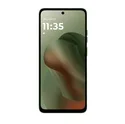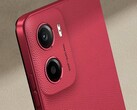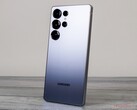Motorola Moto G56 verdict
The Moto G56's sleek exterior makes it look significantly more expensive than Motorola's $250 asking price for this mid-range phone.
But the 6.72-inch device isn't a gimmick, since the robust and waterproof casing - that includes a non-slip faux leather back - is complemented by other advantages such as long battery life, eSIM support, and an SoC that almost always ensures smooth operation in everyday use. The design is rounded off by a fast fingerprint sensor, good camera quality for this price range, a microSD slot, fast charging speeds, and a PWM-free display.
Buyers will have to accept the relatively short update period, which is only two OS upgrades. Also not great are the slow Wi-Fi, the inaccurate GPS, and the rather wide display bezel, especially at the bottom.
Pros
Cons
Price and availability
At the time of this review, the Moto G56 is not available for purchase on either Motorola's online store or Amazon.
Table of Contents
- Motorola Moto G56 verdict
- Specifications
- Case - Waterproof and a faux leather rear
- Features - The Moto G56 comes with 8 GB of RAM and 256 GB of storage
- Software - Only 2 updates will follow Android 15
- Communication and GNSS - WiFi 5 and imprecise GPS
- Telephone functions and voice quality
- Cameras - A dual-camera 50 MP + 8 MP setup
- Accessories and warranty - The Moto G56 comes without a charger
- Input devices and operation - A 120 Hz screen and fast fingerprint sensor
- Display - A 1,000 nit IPS screen that lacks PWM
- Performance - The Moto G56 packs a MediaTek Dimensity 7060
- Games - Genshin Impact is also fun on the Moto G56
- Emissions - A hot smartphone with good sound
- Battery life - Great stamina thanks to its 5,200 mAh battery
- Notebookcheck overall rating
- Possible alternatives compared
Motorola has overhauled its midrange smartphone, the Moto G55. The larger successor, the Moto G56, has the same starting price and features several minor improvements, including enhancements to the case, selfie camera, and battery. Our review reveals how well it stacks up against the current competition.
Specifications
Case - Waterproof and a faux leather rear
Unlike the Moto G55, the Moto G56 is not available in pink. It comes in green (Dill) with a faux leather back cover, but is just as eye-catching. It looks equally striking in Gray Mist and Dazzling Blue. Those who prefer a more understated look can opt for the Black Oyster color variant.
The smartphone's soft-touch back cover is easy to grip and has a particularly stylish rear, where the square camera module is seamlessly embedded. However, the display bezels aren't exactly slim, and the frame is made entirely of plastic.
With its IP68/69 certification, the Moto G56 can be dropped into water without sustaining damage. The IPS display comes with Gorilla Glass 7i protection.
Features - The Moto G56 comes with 8 GB of RAM and 256 GB of storage
Motorola has equipped the Moto G56 with 8 GB of RAM and 256 GB of storage, with an official asking price of $274 for its mid-range smartphone. The internal storage can be expanded via a microSD card, which supports up to 2 TB.
microSD Card Reader
The microSD card reader achieves good transfer speeds with the Angelbird AV Pro V60 microSD reference card and the SanDisk Extreme microSDXC UHS-I, which are slightly above the class average.
| SD Card Reader - average JPG Copy Test (av. of 3 runs) | |
| Samsung Galaxy A35 5G (Angelbird AV Pro V60) | |
| Motorola Moto G56 (Angelbird V60) | |
| Motorola Moto G55 (Angelbird V60) | |
| Average of class Smartphone (5.72 - 58.9, n=67, last 2 years) | |
| Xiaomi Redmi Note 14 5G (Angelbird AV Pro V60) | |
Cross Platform Disk Test (CPDT)
Software - Only 2 updates will follow Android 15
The Moto G56 runs Android 15, which Motorola has left untouched apart from a handful of in-house apps. The manufacturer has promised to update its mid-range phone with Android security updates every two months up to May 2029. However, there will likely be no more than 2 OS upgrades.
Sustainability
The Moto G56 comes in plastic-free packaging printed with soy ink and made from recycled materials according to FSC Mix certification.
Motorola publishes its sustainability efforts on its website. However, information regarding the smartphone's carbon footprint is not available there. Spare parts and DIY repair instructions are available from Motorola's partner, Replacebase.
Communication and GNSS - WiFi 5 and imprecise GPS
The good range of cellular frequencies includes WiFi 5, Bluetooth 5.3, and NFC, and this provides the Moto G56 with solid communication features. Mid-range rivals such as the Nothing Phone (2a) and the Samsung Galaxy A35 (5G) offer faster WiFi thanks to support for WiFi 6. Our reference router is the Asus ROG Rapture AXE1100.
| Networking | |
| Motorola Moto G56 | |
| iperf3 transmit AXE11000 | |
| iperf3 receive AXE11000 | |
| Motorola Moto G55 | |
| iperf3 transmit AXE11000 | |
| iperf3 receive AXE11000 | |
| Nothing Phone (2a) | |
| iperf3 transmit AXE11000 | |
| iperf3 receive AXE11000 | |
| iperf3 transmit AXE11000 6GHz | |
| iperf3 receive AXE11000 6GHz | |
| Samsung Galaxy A35 5G | |
| iperf3 transmit AXE11000 | |
| iperf3 receive AXE11000 | |
| Xiaomi Redmi Note 14 5G | |
| iperf3 transmit AXE11000 | |
| iperf3 receive AXE11000 | |
| Average 802.11 a/b/g/n/ac | |
| iperf3 transmit AXE11000 | |
| iperf3 receive AXE11000 | |
| Average of class Smartphone | |
| iperf3 transmit AXE11000 | |
| iperf3 receive AXE11000 | |
| iperf3 transmit AXE11000 6GHz | |
| iperf3 receive AXE11000 6GHz | |
As a navigation device, the Moto G56 didn't quite manage to impress us in our tests. As long as we stayed in one place for a while, it managed to pinpoint the location accurately. However, accuracy often faltered when we were on the go.
Compared to the Garmin Venu 2 fitness smartwatch, the smartphone sometimes positioned us significantly off-track on a short bike ride, even in less densely populated areas.
Telephone functions and voice quality
The Moto G56 only offers a single nano-SIM slot, but an eSIM can also be activated for dual-SIM operation. VoLTE and Wi-Fi calling are both supported.
The Moto G56 delivers good performance in terms of its voice quality. In our test calls, it transmitted voices naturally and reliably blocked out background noise.
Cameras - A dual-camera 50 MP + 8 MP setup
The Moto G56 features a 50 MP Sony LYTIA 600 main camera and an 8 MP ultra-wide-angle camera. In Pro mode, the camera app supports RAW and JPEG+RAW recordings. In Ultra-Res mode, the full 50 MP can be used.
The main camera takes quite sharp and attractive shots, that don't capture too much detail in high contrast and low light, but are color-balanced and relatively good for this price range. The ultra-wide-angle camera also does a good job, but offers little more than snapshot quality.
The main camera records videos at a maximum of 1080p at 60 frames per second. Just like the 32 MP selfie camera (maximum 1080p at 30fps), the image quality is quite decent and sufficient for video chats or as content for social media apps. However, if you value videos, you won't be happy with the Moto G56, since other smartphones offer more in terms of image sharpness and illumination.
Image comparison
Choose a scene and navigate within the first image. One click changes the position on touchscreens. One click on the zoomed-in image opens the original in a new window. The first image shows the scaled photograph of the test device.
Daylight shotDaylight shotUltra-wide angleLowlight shotIn the test lab, the main camera demonstrated that it can capture colors accurately under optimal lighting conditions. However, things looked bleak at 1 lux of residual light: The color chart and test chart disappeared completely into the dark.
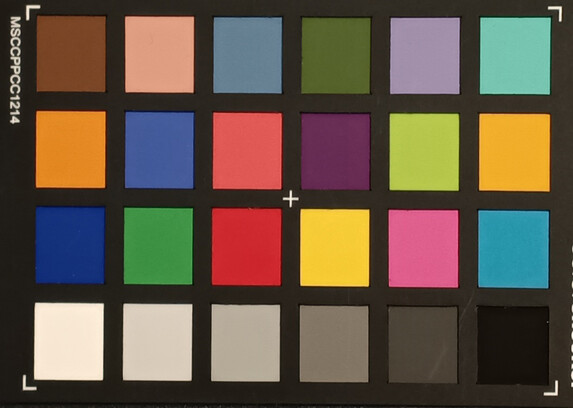

Accessories and warranty - The Moto G56 comes without a charger
The package includes a USB-C cable, a protective case, a SIM tool, and a quick start guide.
In Germany, Motorola provides its Moto G56 with a 24-month warranty.
Input devices and operation - A 120 Hz screen and fast fingerprint sensor
The 120 Hz touchscreen and MediaTek Dimensity 7060 processor combine to ensure almost permanently smooth operation. You can experience the occasional stutter, but only when using very demanding apps.
The power button also houses the fingerprint sensor, which allows you to unlock the Moto G56 reliably and with virtually no waiting time. Authentication via the selfie camera's 2D facial recognition is just as fast.
Display - A 1,000 nit IPS screen that lacks PWM
Unlike many of its competitors, the Moto G56 uses an IPS display. While it doesn't achieve the high contrast seen with AMOLED screens, it proved to be particularly easy on the eyes in our tests. Our measurements show that the IPS screen operates without any trace of PWM flickering.
Motorola specifies the maximum brightness as 1,000 cd/m². In small image sections (APL18), the display comes close to the manufacturer's specification, with a peak value of 908 cd/m².
| |||||||||||||||||||||||||
Brightness Distribution: 89 %
Center on Battery: 853 cd/m²
Contrast: 1580:1 (Black: 0.54 cd/m²)
ΔE ColorChecker Calman: 4.21 | ∀{0.5-29.43 Ø4.78}
ΔE Greyscale Calman: 3 | ∀{0.09-98 Ø5}
99% sRGB (Calman 2D)
Gamma: 2.175
CCT: 6750 K
| Motorola Moto G56 IPS, 2400x1080, 6.7" | Motorola Moto G55 IPS, 2400x1080, 6.5" | Nothing Phone (2a) AMOLED, 2412x1084, 6.7" | Samsung Galaxy A35 5G Super AMOLED, 2340x1080, 6.6" | Xiaomi Redmi Note 14 5G AMOLED, 2400x1080, 6.7" | |
|---|---|---|---|---|---|
| Screen | 3% | 41% | 28% | 36% | |
| Brightness middle (cd/m²) | 853 | 968 13% | 1033 21% | 904 6% | 1147 34% |
| Brightness (cd/m²) | 793 | 870 10% | 1042 31% | 912 15% | 1146 45% |
| Brightness Distribution (%) | 89 | 83 -7% | 96 8% | 97 9% | 96 8% |
| Black Level * (cd/m²) | 0.54 | 0.4 26% | |||
| Contrast (:1) | 1580 | 2420 53% | |||
| Colorchecker dE 2000 * | 4.21 | 2.98 29% | 1.6 62% | 2.1 50% | 1.6 62% |
| Colorchecker dE 2000 max. * | 6.69 | 8.76 -31% | 2.5 63% | 2.8 58% | 3.7 45% |
| Greyscale dE 2000 * | 3 | 5 -67% | 1.2 60% | 2.2 27% | 2.3 23% |
| Gamma | 2.175 101% | 2.289 96% | 2.07 106% | 2.1 105% | 2.27 97% |
| CCT | 6750 96% | 6509 100% | 6482 100% | 6478 100% | 6368 102% |
* ... smaller is better
Screen Flickering / PWM (Pulse-Width Modulation)
| Screen flickering / PWM not detected | |||
In comparison: 53 % of all tested devices do not use PWM to dim the display. If PWM was detected, an average of 8108 (minimum: 5 - maximum: 343500) Hz was measured. | |||
Display Response Times
| ↔ Response Time Black to White | ||
|---|---|---|
| 19.7 ms ... rise ↗ and fall ↘ combined | ↗ 8.7 ms rise | |
| ↘ 11 ms fall | ||
| The screen shows good response rates in our tests, but may be too slow for competitive gamers. In comparison, all tested devices range from 0.1 (minimum) to 240 (maximum) ms. » 42 % of all devices are better. This means that the measured response time is similar to the average of all tested devices (20.2 ms). | ||
| ↔ Response Time 50% Grey to 80% Grey | ||
| 27.5 ms ... rise ↗ and fall ↘ combined | ↗ 15.2 ms rise | |
| ↘ 12.3 ms fall | ||
| The screen shows relatively slow response rates in our tests and may be too slow for gamers. In comparison, all tested devices range from 0.165 (minimum) to 636 (maximum) ms. » 36 % of all devices are better. This means that the measured response time is better than the average of all tested devices (31.6 ms). | ||
Performance - The Moto G56 packs a MediaTek Dimensity 7060
The Moto G56 uses the MediaTek Dimensity 7060. On paper, the eight-core SoC is faster than the Dimensity 7025 found in the Moto G55, however, in practice, there are no noticeable differences. That's no bad thing, because the performance of the Dimensity 7060 is enough to help the Moto G56 achieve good everyday performance. Nevertheless, comparably priced mid-range smartphones such as the Nothing Phone (2a) or the Samsung Galaxy A35 (5G) are a bit faster.
| UL Procyon AI Inference for Android - Overall Score NNAPI | |
| Nothing Phone (2a) | |
| Average of class Smartphone (3769 - 81594, n=135, last 2 years) | |
| Motorola Moto G56 | |
| Average MediaTek Dimensity 7060 (n=1) | |
| Samsung Galaxy A35 5G | |
| Xiaomi Redmi Note 14 5G | |
| AImark - Score v3.x | |
| Average of class Smartphone (82 - 307528, n=122, last 2 years) | |
| Nothing Phone (2a) | |
| Xiaomi Redmi Note 14 5G | |
| Motorola Moto G56 | |
| Average MediaTek Dimensity 7060 (n=1) | |
| Samsung Galaxy A35 5G | |
| Geekbench AI | |
| Single Precision NPU 1.5 | |
| Average of class Smartphone (80 - 5210, n=59, last 2 years) | |
| Motorola Moto G56 | |
| Average MediaTek Dimensity 7060 (n=1) | |
| Half Precision NPU 1.5 | |
| Average of class Smartphone (80 - 36297, n=59, last 2 years) | |
| Motorola Moto G56 | |
| Average MediaTek Dimensity 7060 (n=1) | |
| Quantized NPU 1.5 | |
| Average of class Smartphone (133 - 49889, n=59, last 2 years) | |
| Motorola Moto G56 | |
| Average MediaTek Dimensity 7060 (n=1) | |
GFXBench 3.0: on screen Manhattan Onscreen OGL | 1920x1080 1080p Manhattan Offscreen
GFXBench 3.1: on screen Manhattan ES 3.1 Onscreen | 1920x1080 Manhattan ES 3.1 Offscreen
GFXBench: on screen Car Chase Onscreen | 1920x1080 Car Chase Offscreen | on screen Aztec Ruins High Tier Onscreen | 2560x1440 Aztec Ruins High Tier Offscreen | on screen Aztec Ruins Normal Tier Onscreen | 1920x1080 Aztec Ruins Normal Tier Offscreen | 3840x2160 4K Aztec Ruins High Tier Offscreen
| GFXBench (DX / GLBenchmark) 2.7 / T-Rex Onscreen | |
| Samsung Galaxy A35 5G | |
| Motorola Moto G56 | |
| Nothing Phone (2a) | |
| Xiaomi Redmi Note 14 5G | |
| GFXBench (DX / GLBenchmark) 2.7 / T-Rex Offscreen | |
| Nothing Phone (2a) | |
| Samsung Galaxy A35 5G | |
| Motorola Moto G56 | |
| Xiaomi Redmi Note 14 5G | |
| GFXBench 3.0 / Manhattan Onscreen OGL | |
| Samsung Galaxy A35 5G | |
| Nothing Phone (2a) | |
| Motorola Moto G56 | |
| Xiaomi Redmi Note 14 5G | |
| GFXBench 3.0 / 1080p Manhattan Offscreen | |
| Nothing Phone (2a) | |
| Samsung Galaxy A35 5G | |
| Xiaomi Redmi Note 14 5G | |
| Motorola Moto G56 | |
| GFXBench 3.1 / Manhattan ES 3.1 Onscreen | |
| Nothing Phone (2a) | |
| Samsung Galaxy A35 5G | |
| Motorola Moto G56 | |
| Xiaomi Redmi Note 14 5G | |
| GFXBench 3.1 / Manhattan ES 3.1 Offscreen | |
| Nothing Phone (2a) | |
| Samsung Galaxy A35 5G | |
| Motorola Moto G56 | |
| Xiaomi Redmi Note 14 5G | |
| GFXBench / Car Chase Onscreen | |
| Nothing Phone (2a) | |
| Samsung Galaxy A35 5G | |
| Motorola Moto G56 | |
| Xiaomi Redmi Note 14 5G | |
| GFXBench / Car Chase Offscreen | |
| Nothing Phone (2a) | |
| Samsung Galaxy A35 5G | |
| Motorola Moto G56 | |
| Xiaomi Redmi Note 14 5G | |
| GFXBench / Aztec Ruins High Tier Onscreen | |
| Nothing Phone (2a) | |
| Samsung Galaxy A35 5G | |
| Motorola Moto G55 | |
| Motorola Moto G56 | |
| Xiaomi Redmi Note 14 5G | |
| GFXBench / Aztec Ruins High Tier Offscreen | |
| Nothing Phone (2a) | |
| Samsung Galaxy A35 5G | |
| Motorola Moto G55 | |
| Motorola Moto G56 | |
| Xiaomi Redmi Note 14 5G | |
| GFXBench / Aztec Ruins Normal Tier Onscreen | |
| Nothing Phone (2a) | |
| Samsung Galaxy A35 5G | |
| Motorola Moto G55 | |
| Xiaomi Redmi Note 14 5G | |
| Motorola Moto G56 | |
| GFXBench / Aztec Ruins Normal Tier Offscreen | |
| Nothing Phone (2a) | |
| Samsung Galaxy A35 5G | |
| Motorola Moto G55 | |
| Xiaomi Redmi Note 14 5G | |
| Motorola Moto G56 | |
| GFXBench / 4K Aztec Ruins High Tier Offscreen | |
| Nothing Phone (2a) | |
| Samsung Galaxy A35 5G | |
| Motorola Moto G55 | |
| Motorola Moto G56 | |
| Xiaomi Redmi Note 14 5G | |
| Jetstream 2 - 2.0 Total Score | |
| Average of class Smartphone (23.8 - 387, n=149, last 2 years) | |
| Samsung Galaxy A35 5G (Chrome 123.0.6312.100) | |
| Xiaomi Redmi Note 14 5G (Chrome 133.0.6943.49) | |
| Motorola Moto G56 (Chrome 138.0.7204.63) | |
| Average MediaTek Dimensity 7060 (n=1) | |
| Nothing Phone (2a) (Firefox 124.2.0) | |
| Speedometer 2.0 - Result 2.0 | |
| Average of class Smartphone (15.2 - 643, n=122, last 2 years) | |
| Motorola Moto G56 (Chrome 138.0.7204.63) | |
| Average MediaTek Dimensity 7060 (n=1) | |
| Xiaomi Redmi Note 14 5G (Chrome 133.0.6943.49) | |
| Nothing Phone (2a) (Chrome 123.0.6312.99) | |
| Samsung Galaxy A35 5G (Chrome 123.0.6312.100) | |
| Speedometer 3 - Score 3.0 | |
| Average of class Smartphone (1.03 - 42.8, n=124, last 2 years) | |
| Motorola Moto G56 (Chrome 138.0.7204.63) | |
| Average MediaTek Dimensity 7060 (n=1) | |
| Xiaomi Redmi Note 14 5G (Chrome 133.0.6943.49) | |
| Nothing Phone (2a) (Chrome 123.0.6312.99) | |
| Samsung Galaxy A35 5G (Chrome 123.0.6312.100) | |
| WebXPRT 4 - Overall | |
| Average of class Smartphone (27 - 306, n=145, last 2 years) | |
| Nothing Phone (2a) (Firefox 124.2.0) | |
| Samsung Galaxy A35 5G (Chrome 123.0.6312.100) | |
| Xiaomi Redmi Note 14 5G (Chrome 133.0.6943.49) | |
| Motorola Moto G56 (Chrome 138.0.7204.63) | |
| Average MediaTek Dimensity 7060 (n=1) | |
| Octane V2 - Total Score | |
| Average of class Smartphone (2228 - 121337, n=197, last 2 years) | |
| Xiaomi Redmi Note 14 5G (Chrome 133.0.6943.49) | |
| Samsung Galaxy A35 5G (Chrome 123.0.6312.100) | |
| Motorola Moto G55 (Chrome 128) | |
| Motorola Moto G56 (Chrome 138.0.7204.63) | |
| Average MediaTek Dimensity 7060 (n=1) | |
| Nothing Phone (2a) (Firefox 124.2.0) | |
| Mozilla Kraken 1.1 - Total | |
| Nothing Phone (2a) (Firefox 124.2.0) | |
| Average MediaTek Dimensity 7060 (n=1) | |
| Motorola Moto G56 (Chrome 138.0.7204.63) | |
| Average of class Smartphone (257 - 28190, n=153, last 2 years) | |
| Xiaomi Redmi Note 14 5G (Chrome 133.0.6943.49) | |
| Samsung Galaxy A35 5G (Chrome 123.0.6312.100) | |
* ... smaller is better
| Motorola Moto G56 | Motorola Moto G55 | Nothing Phone (2a) | Samsung Galaxy A35 5G | Xiaomi Redmi Note 14 5G | Average 256 GB UFS 2.2 Flash | Average of class Smartphone | |
|---|---|---|---|---|---|---|---|
| AndroBench 3-5 | -3% | 17% | -46% | 2% | -5% | 77% | |
| Sequential Read 256KB (MB/s) | 1013.35 | 950.4 -6% | 1028.37 1% | 529.32 -48% | 950.62 -6% | 903 ? -11% | 2217 ? 119% |
| Sequential Write 256KB (MB/s) | 859.11 | 815.8 -5% | 952 11% | 270 -69% | 792.56 -8% | 727 ? -15% | 1840 ? 114% |
| Random Read 4KB (MB/s) | 230.68 | 234.6 2% | 273.19 18% | 244.24 6% | 257.91 12% | 226 ? -2% | 294 ? 27% |
| Random Write 4KB (MB/s) | 226.19 | 222.4 -2% | 311.8 38% | 62.59 -72% | 245.16 8% | 247 ? 9% | 334 ? 48% |
Games - Genshin Impact is also fun on the Moto G56
The Dimensity 7060 is powered by the IMG BXM-8-256 GPU. As Gamebench tests demonstrate, its performance is sufficient to run even more demanding games such as Genshin Impact relatively smoothly. However, frame stuttering can still occur.
Emissions - A hot smartphone with good sound
Temperature
The Moto G56 barely heats up in everyday use, but it can get uncomfortably warm under sustained maximum load. After an hour of running the Burnout benchmark, we measured toasty surface temperatures of up to 49°C.
Throttling, however, is not an issue, as demonstrated by GFXBench's T-Rex stress test scenario. Frame rates remain as high as they were at the beginning, even after the 30th run.
(-) The maximum temperature on the upper side is 49 °C / 120 F, compared to the average of 35.2 °C / 95 F, ranging from 21.9 to 247 °C for the class Smartphone.
(±) The bottom heats up to a maximum of 44.2 °C / 112 F, compared to the average of 34 °C / 93 F
(+) In idle usage, the average temperature for the upper side is 28.2 °C / 83 F, compared to the device average of 32.9 °C / 91 F.
Speakers
The Moto G56's stereo speakers produce sound that lacks bass but still sounds good thanks to balanced mids and highs.
Headphones and other external audio devices can be connected to the smartphone via Bluetooth 5.3 and the 3.5 mm jack. The Moto G56 supports most current Bluetooth codecs.
Motorola Moto G56 audio analysis
(+) | speakers can play relatively loud (84.5 dB)
Bass 100 - 315 Hz
(-) | nearly no bass - on average 24% lower than median
(±) | linearity of bass is average (13.6% delta to prev. frequency)
Mids 400 - 2000 Hz
(+) | balanced mids - only 3.6% away from median
(+) | mids are linear (4.2% delta to prev. frequency)
Highs 2 - 16 kHz
(+) | balanced highs - only 3% away from median
(+) | highs are linear (5% delta to prev. frequency)
Overall 100 - 16.000 Hz
(±) | linearity of overall sound is average (18.8% difference to median)
Compared to same class
» 22% of all tested devices in this class were better, 10% similar, 68% worse
» The best had a delta of 11%, average was 35%, worst was 134%
Compared to all devices tested
» 42% of all tested devices were better, 8% similar, 50% worse
» The best had a delta of 4%, average was 24%, worst was 134%
Samsung Galaxy A35 5G audio analysis
(+) | speakers can play relatively loud (90.9 dB)
Bass 100 - 315 Hz
(-) | nearly no bass - on average 23.6% lower than median
(+) | bass is linear (6.3% delta to prev. frequency)
Mids 400 - 2000 Hz
(±) | reduced mids - on average 7.9% lower than median
(+) | mids are linear (6.3% delta to prev. frequency)
Highs 2 - 16 kHz
(+) | balanced highs - only 4.5% away from median
(+) | highs are linear (2.6% delta to prev. frequency)
Overall 100 - 16.000 Hz
(±) | linearity of overall sound is average (18% difference to median)
Compared to same class
» 16% of all tested devices in this class were better, 8% similar, 76% worse
» The best had a delta of 11%, average was 35%, worst was 134%
Compared to all devices tested
» 37% of all tested devices were better, 8% similar, 55% worse
» The best had a delta of 4%, average was 24%, worst was 134%
Battery life - Great stamina thanks to its 5,200 mAh battery
Power consumption
The Moto G56 can be charged via a wired charger at a maximum of 30 watts. In our tests, a full charging cycle took 1 hour and 18 minutes. Charging to 80 percent took 52 minutes.
The Motorola phone performed exemplary in terms of power consumption. It consumed less power on average than its competitors when idle and under load.
| Off / Standby | |
| Idle | |
| Load |
|
Key:
min: | |
| Motorola Moto G56 5200 mAh | Nothing Phone (2a) 5000 mAh | Samsung Galaxy A35 5G 5000 mAh | Xiaomi Redmi Note 14 5G 5110 mAh | Average MediaTek Dimensity 7060 | Average of class Smartphone | |
|---|---|---|---|---|---|---|
| Power Consumption | -15% | -31% | -7% | 0% | -28% | |
| Idle Minimum * (Watt) | 1 | 0.81 19% | 0.89 11% | 1.15 -15% | 1 ? -0% | 0.842 ? 16% |
| Idle Average * (Watt) | 1.3 | 2.01 -55% | 1.99 -53% | 1.55 -19% | 1.3 ? -0% | 1.439 ? -11% |
| Idle Maximum * (Watt) | 1.9 | 2.07 -9% | 2.14 -13% | 1.57 17% | 1.9 ? -0% | 1.624 ? 15% |
| Load Average * (Watt) | 3.5 | 4.16 -19% | 4.57 -31% | 3.87 -11% | 3.5 ? -0% | 7.03 ? -101% |
| Load Maximum * (Watt) | 7.2 | 7.91 -10% | 12.31 -71% | 7.66 -6% | 7.2 ? -0% | 11.3 ? -57% |
* ... smaller is better
Power consumption: Geekbench (150 cd/m²)
Power consumption: GFXbench (150 cd/m²)
Battery runtimes
The Moto G56's 5,200 mAh battery is responsible for the review candidate's good runtimes. In the realistic Wi-Fi test, it kept going for 18 hours and 30 seconds, outperforming not only its predecessor but also all comparable devices.
| Battery runtime - WiFi v1.3 | |
| Motorola Moto G56 | |
| Motorola Moto G55 | |
| Nothing Phone (2a) | |
| Samsung Galaxy A35 5G | |
| Xiaomi Redmi Note 14 5G | |
Notebookcheck overall rating
The Motorola Moto G56 offers a ton of features for little money. Besides the high-quality case, the main advantages include the largely smooth performance and long battery life. The mid-range smartphone's weaknesses include slow Wi-Fi, inaccurate GPS, and short update times.
Motorola Moto G56
- 07/21/2025 v8
Manuel Masiero
Possible alternatives compared
Image | Model / Review | Price | Weight | Drive | Display |
|---|---|---|---|---|---|
| Motorola Moto G56 MediaTek Dimensity 7060 ⎘ IMG BXM-8-256 ⎘ 8 GB Memory, 256 GB UFS 2.1 | Amazon: 1. $220.00 Motorola Moto G56 5G Ai (Tmo... 2. $10.79 Ibywind For Motorola Moto G5... 3. $8.90 USTIYA Case for Motorola Mot... List Price: 250 Euro | 200 g | 256 GB UFS 2.2 Flash | 6.72" 2400x1080 391 PPI IPS | |
| Motorola Moto G55 MediaTek Dimensity 7025 ⎘ IMG BXM-8-256 ⎘ 8 GB Memory, 256 GB | Amazon: 1. $185.00 Motorola Moto G55 Dual-SIM 2... 2. $225.00 Motorola Moto G75 5G (XT2437... 3. $6.95 Mr.Shield Screen Protector c... List Price: 249€ | 179 g | 256 GB UFS 3.1 Flash | 6.49" 2400x1080 406 PPI IPS | |
| Nothing Phone (2a) MediaTek Dimensity 7200 ⎘ ARM Mali-G610 MP4 ⎘ 12 GB Memory, 256 GB | Amazon: 1. $49.00 CMF Buds 2a Wireless Earbuds... 2. $11.99 Ibywind 2 Pack Screen Protec... 3. $4.99 Mr.Shield Screen Protector c... List Price: 329€ | 190 g | 256 GB UFS 3.1 Flash | 6.70" 2412x1084 394 PPI AMOLED | |
| Samsung Galaxy A35 5G Samsung Exynos 1380 ⎘ ARM Mali-G68 MP5 ⎘ 6 GB Memory, 128 GB UFS 2.1 | Amazon: 1. $299.99 Samsung Galaxy A35 5G A356E ... 2. $339.99 SAMSUNG Galaxy A35 5G, Andro... 3. $329.99 Samsung Galaxy A35 5G + 4G L... List Price: 379€ | 209 g | 128 GB UFS 2.2 Flash | 6.60" 2340x1080 390 PPI Super AMOLED | |
| Xiaomi Redmi Note 14 5G MediaTek Dimensity 7025 ⎘ IMG BXM-8-256 ⎘ 8 GB Memory, 256 GB UFS 2.1 | Amazon: 1. $299.99 XIAOMI Redmi Note 14 5G + LT... 2. $348.00 XIAOMI Redmi Note 14 Pro+ Pl... 3. $191.50 Xiaomi Redmi Note 14 4G LTE ... | 190 g | 256 GB UFS 2.2 Flash | 6.67" 2400x1080 395 PPI AMOLED |
Transparency
The selection of devices to be reviewed is made by our editorial team. The test sample was provided to the author as a loan by the manufacturer or retailer for the purpose of this review. The lender had no influence on this review, nor did the manufacturer receive a copy of this review before publication. There was no obligation to publish this review. As an independent media company, Notebookcheck is not subjected to the authority of manufacturers, retailers or publishers.
This is how Notebookcheck is testing
Every year, Notebookcheck independently reviews hundreds of laptops and smartphones using standardized procedures to ensure that all results are comparable. We have continuously developed our test methods for around 20 years and set industry standards in the process. In our test labs, high-quality measuring equipment is utilized by experienced technicians and editors. These tests involve a multi-stage validation process. Our complex rating system is based on hundreds of well-founded measurements and benchmarks, which maintains objectivity. Further information on our test methods can be found here.




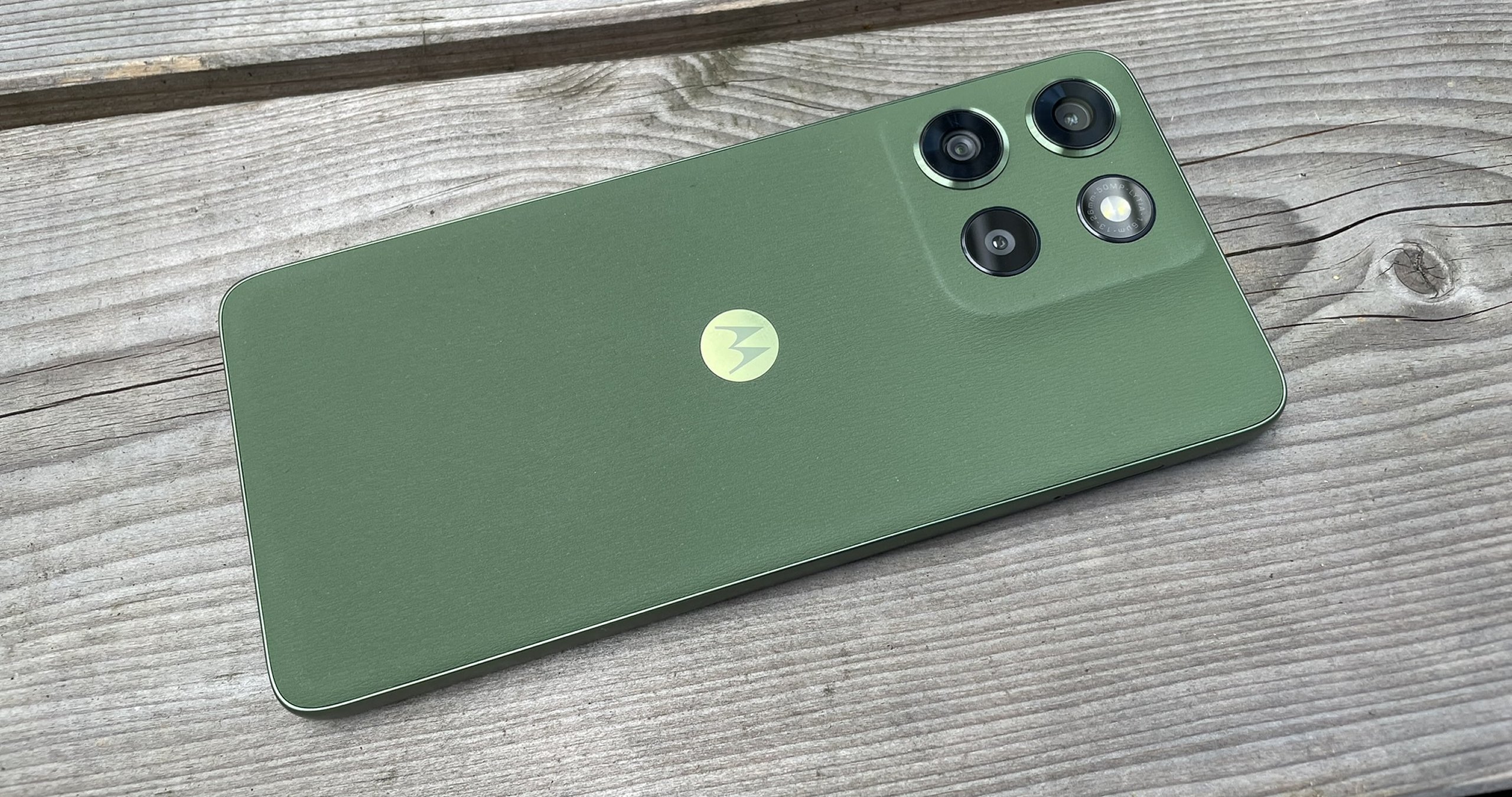



























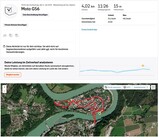

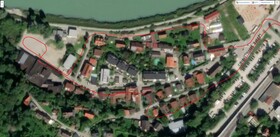
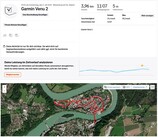

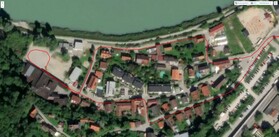


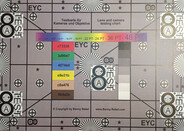





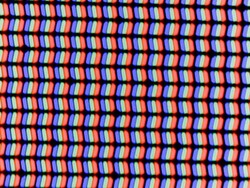
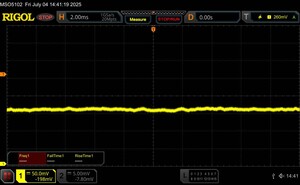
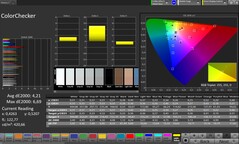
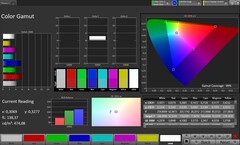
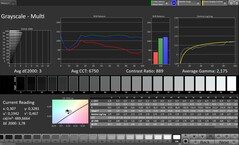
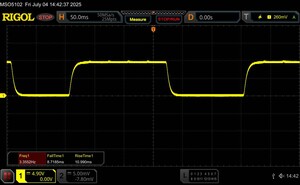
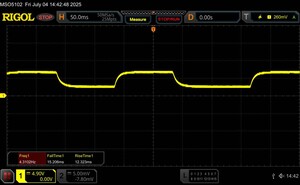



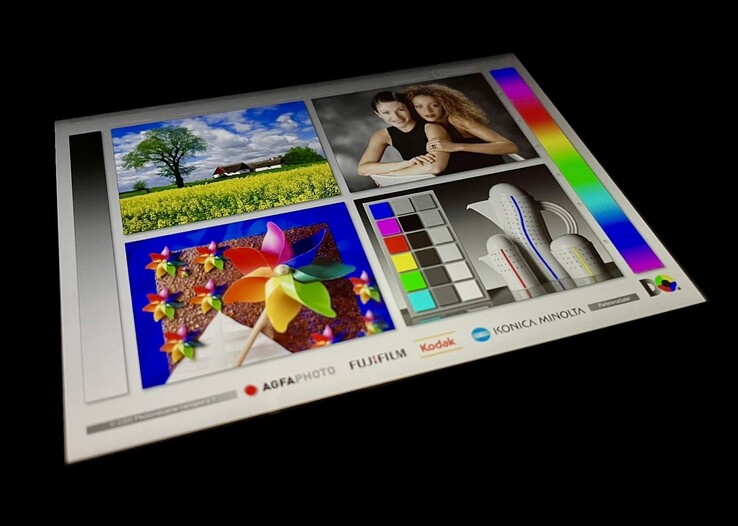





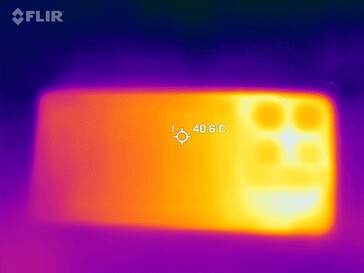
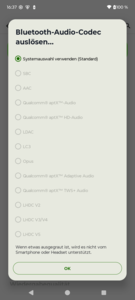
 Total Sustainability Score:
Total Sustainability Score: 